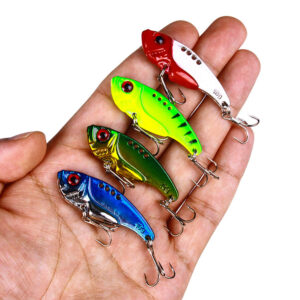Johdanto
Fishing is a great way to relax, spend time with family and friends, and even catch a delicious meal. But to make sure you get the most out of your fishing experience, it’s important to take care of your fishing gear. One of the most critical pieces of fishing equipment is the fishing reel. A fishing reel is an essential tool for any angler, but like any other piece of equipment, it requires proper maintenance to function at its best. In this article, we will provide you with the ultimate guide to fishing reel maintenance. Whether you’re a seasoned angler or just starting, our tips and tricks will help you keep your reel in top condition and extend its lifespan.
The Importance of Fishing Reel Maintenance
Fishing reels are exposed to a wide range of elements that can cause damage and wear over time. Water, salt, sand, and dirt can all contribute to the deterioration of your fishing reel. Without proper maintenance, the reel’s performance will suffer, and it may even fail, leading to a frustrating fishing experience. Regular maintenance will keep your fishing reel functioning at its best, ensuring you have a great time on the water.
How to Clean a Fishing Reel
Cleaning your fishing reel is an essential part of its maintenance. Here are the steps to follow:
- Disassemble the reel: Before cleaning your fishing reel, disassemble it according to the manufacturer’s instructions. If you’re unsure how to disassemble your reel, refer to the user manual or seek advice from a professional.
- Clean the spool: The spool is the part of the reel that holds the fishing line. To clean the spool, use a clean cloth or cotton swab to remove any dirt or debris. Avoid using any abrasive materials that can damage the spool.
- Clean the reel body: Use a clean cloth or cotton swab to clean the reel body. Avoid using water, which can cause rust, and instead use a solvent that’s safe for the type of reel you have. Follow the manufacturer’s instructions for the specific solvent to use.
- Lubricate the reel: After cleaning the reel, lubricate the moving parts with a lubricant recommended by the manufacturer. Be sure to apply the lubricant sparingly, as too much can attract dirt and debris.
- Reassemble the reel: Once the reel is clean and lubricated, reassemble it according to the manufacturer’s instructions.
- Store the reel properly: After cleaning and lubricating your fishing reel, store it in a dry and cool place, away from direct sunlight and moisture.
Tips for Maintaining Your Fishing Reel
In addition to cleaning your fishing reel, there are other tips you can follow to keep it in top condition. Here are some tips to help you maintain your fishing reel:
- Avoid dropping your reel: Dropping your fishing reel can cause damage to its internal components. Be careful when handling your reel, especially when it’s not in use.
- Don’t over-tighten the drag: Over-tightening the drag can cause damage to the reel’s gears and internal components. Follow the manufacturer’s instructions for the proper drag setting.
- Use the right line: Using the right line for your fishing reel is crucial. Using a line that’s too heavy or too light can cause damage to the reel and affect its performance.
- Don’t expose your reel to extreme temperatures: Extreme temperatures can cause damage to your fishing reel. Avoid leaving it in direct sunlight or in a hot car, and don’t use it in extremely cold temperatures.
- Rinse your reel with freshwater: After using your fishing reel in saltwater, rinse it with freshwater to remove any salt residue that can cause corrosion.
- Store your reel properly: When not in use, store your fishing reel in a dry and cool place, away from direct sunlight and moisture. Use a reel cover to protect it from dust and debris.
- Check for damage regularly: Regularly inspect your fishing reel for any signs of damage, such as cracks, rust, or wear. If you notice any damage, have it repaired by a professional.
UKK
Q: How often should I clean my fishing reel?
A: It’s recommended to clean your fishing reel after each use, especially if you’re fishing in saltwater. Regular cleaning will help prolong the lifespan of your reel.
Q: Can I use water to clean my fishing reel?
A: It’s not recommended to use water to clean your fishing reel, as it can cause rust. Instead, use a solvent that’s safe for the type of reel you have.
Q: How can I tell if my fishing reel needs maintenance?
A: If your fishing reel is not performing as well as it used to, or if you notice any signs of damage, it’s time for maintenance. Regular maintenance will help keep your fishing reel in top condition.
Johtopäätös
Proper maintenance is essential for the longevity and performance of your fishing reel. By following the tips and tricks outlined in this ultimate guide to fishing reel maintenance, you can ensure that your reel remains in top condition for many fishing trips to come. Remember to clean your reel after each use, follow the manufacturer’s instructions, and store it properly. Happy fishing!





